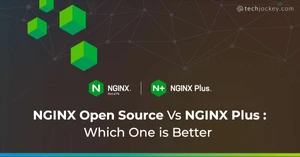Best Load Balancing Software
(Showing 1 - 10 of 14 products)

NGINX Plus
Brand: NGINX (part of F5)
NGINX Plus is the only cloud-native solution, which combines the features for content caching, security controls, load balancing, Web Server, Reverse Prox... Read More About NGINX Plus
Price On Request

AWS Elastic Load Balancing
Brand: Amazon
Be the first to review AWS Elastic Load Balancing ensures seamless distribution of incoming application traffic across multiple targets, optimizing performance and enhancing faul... Read More About AWS Elastic Load Balancing
Price On Request

Microsoft Azure Traffic Manager
Brand: Microsoft Corporation
Be the first to review Microsoft Azure Traffic Manager is an efficient load balancing software that can compress data and save spaces. This load balancing software comes with an... Read More About Microsoft Azure Traffic Manager
Price On Request

Microsoft Azure Application Gateway
Brand: Microsoft Corporation
Be the first to review Microsoft Azure Application Gateway is a complete Load Balancing Software designed to serve Startups, SMBs, SMEs and Agencies. This Load Balancing Software... Read More About Microsoft Azure Application Gateway
Price On Request

Web Werks Load Balancing
Brand: Web Werks India Pvt. Ltd.
Be the first to review Web Werks Load Balancing is a complete Load Balancing Software designed to serve Startups, SMBs, SMEs and Agencies. This Load Balancing Software for Web-Ba... Read More About Web Werks Load Balancing
Price On Request

Radware Alteon
Brand: Radware
Be the first to review Alteon is Radware’s next-generation application delivery controller (ADC) and the only load balancer that guarantees application SLA. It provides advance... Read More About Radware Alteon
Price On Request

KEMP Load Balancer
Brand: KEMP Tech
KEMP Load Balancer is a load balancing software which is optimized and certified for Microsoft workloads. It is a cloud based software that is easy to conf... Read More About KEMP Load Balancer
₹251,894

Cedexis Openmix
Brand: Cedexis
Be the first to review Cedexis Openmix is one of the best load balancing software that offers real-time load balancing and compresses data to maximise storage options. Cedexis Op... Read More About Cedexis Openmix
Price On Request

Citrix ADC
Brand: Citrix Systems
Be the first to review Citrix ADC is a load balancing software which provides proven L4-7 load balancing and global server load balancing (GSLB) to ensure the best application pe... Read More About Citrix ADC
Price On Request

Imperva Incapsula
Brand: imperva
Imperva Incapsula is a complete Load Balancing Software designed to serve Startups, SMBs, SMEs and Agencies. This Load Balancing Software for Web-Based has... Read More About Imperva Incapsula
Price On Request
Last Updated on : 10 Apr, 2024
Load Balancing Software Comparison










